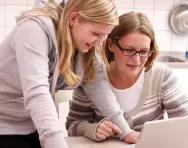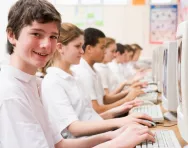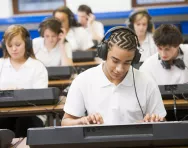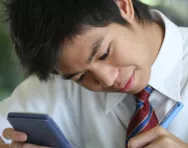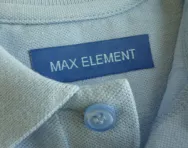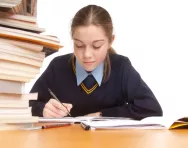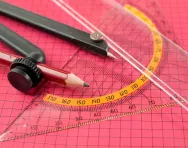Important update from TheSchoolRun
For the past 13 years, TheSchoolRun has been run by a small team of mums working from home, dedicated to providing quality educational resources to primary school parents. Unfortunately, rising supplier costs and falling revenue have made it impossible for us to continue operating, and we’ve had to make the difficult decision to close. The good news: We’ve arranged for another educational provider to take over many of our resources. These will be hosted on a new portal, where the content will be updated and expanded to support your child’s learning.
What this means for subscribers:
- Your subscription is still active, and for now, you can keep using the website as normal — just log in with your usual details to access all our articles and resources*.
- In a few months, all resources will move to the new portal. You’ll continue to have access there until your subscription ends. We’ll send you full details nearer the time.
- As a thank you for your support, we’ll also be sending you 16 primary school eBooks (worth £108.84) to download and keep.
A few changes to be aware of:
- The Learning Journey weekly email has ended, but your child’s plan will still be updated on your dashboard each Monday. Just log in to see the recommended worksheets.
- The 11+ weekly emails have now ended. We sent you all the remaining emails in the series at the end of March — please check your inbox (and spam folder) if you haven’t seen them. You can also follow the full programme here: 11+ Learning Journey.
If you have any questions, please contact us at [email protected]. Thank you for being part of our journey it’s been a privilege to support your family’s learning.
*If you need to reset your password, it will still work as usual. Please check your spam folder if the reset email doesn’t appear in your inbox.
Your guide to integrated learning
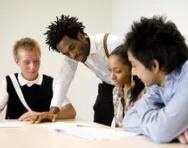
Making the move from primary to secondary school can be a major ordeal for children. So in an effort to ease the transition and better prepare children for their years of learning ahead many schools are adopting creative ways of teaching – particularly with their year 7 intakes. One method proving popular is integrated learning. So what is it?
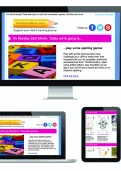
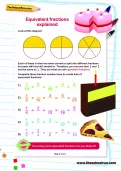
Start a unique learning programme!
- Weekly programme for each school year
- Worksheets sent direct to your inbox
- Keeps your child's learning on track
The Integrated Learning Programme
The Integrated Learning Programme (ILP) is based on research by the think tank, the Royal Society for the Encouragement of Arts, Manufactures and Commerce (RSA).
In 1999 the RSA identified a mismatch between what the national curriculum was trying to do and what they thought education for the new century should be doing. They argued that young people weren’t being prepared for adult life through the normal single subject lessons. They believed children needed to develop what they deemed to be important life skills to cope with the 21st century ‘information explosion’.
These skills (or competencies as they are known) have been identified as learning, managing information, relating to people, managing situations, and citizenship.
How does integrated learning work?
The ILP doesn’t replace the national curriculum but acts as a tool to help deliver it. It’s designed for use with Key Stage 3 (11-14 year olds), but most schools choose to introduce it just for year 7s, as a way of helping them adapt to the new school regime.
In traditional lessons, students would tend to move from class to class, teacher to teacher. However, schools using the ILP rewrite the timetable, lessons are longer and subjects are merged together into topics areas such as ‘myself, life journeys and storytelling’.
The most commonly integrated subjects are geography, citizenship and RE, but each school can choose its own path.
The benefits of integrated learning
The RSA argue that this manner of teaching will help children ‘learn about learning’, find out more about themselves and work out how to tackle real problems.
Teachers are generally enthusiastic, too, and say children become more involved in the lesson and begin to understand that they are responsible for their own learning.
Gumley Convent School in Isleworth has been using the ILP for the last five years. Fiona Russell is in charge of the programme there and is very positive about the benefits. “Children are actively engaged in learning to the extent they don’t notice break times,” she says. Amy Key, a year 7 pupil at Gumley agrees. "We have lots of group discussions and have to really think things through. It’s more interesting than just sitting listening to the teacher all the time,” she explains.
Students and parents often believe the programme helps Year 7s settle into secondary school because it engages them from the beginning. Improvements in behaviour and attendance have been noted, too.
Integrated learning: help your child at home
- Make links between real-life subjects. Bake a cake together and your child will experience maths, science and English (weighing, mixing, reading instructions).
- Encourage your child to read newspapers and watch the news. Highlight how subjects like history, geography and politics often merge.
- Don’t forget the basics that your child needs – reading, writing and arithmetic are as important as they always were.
- Encourage your children to come up with their own solutions to real life problems, e.g. a row with a sibling.
